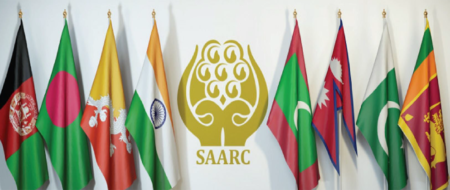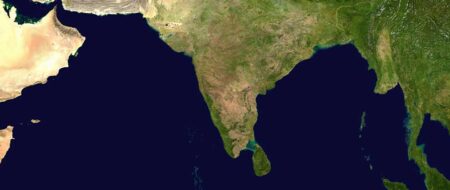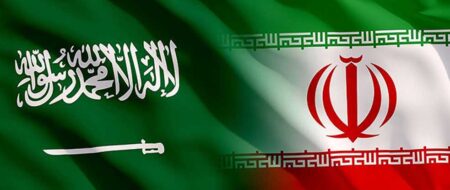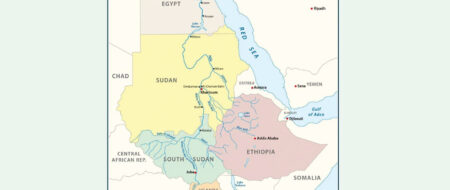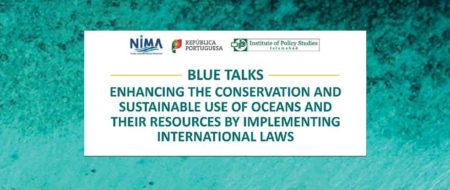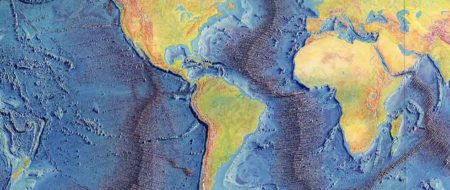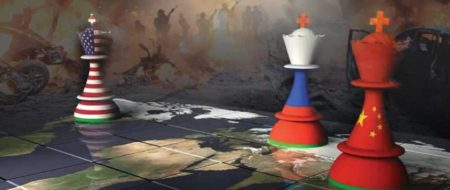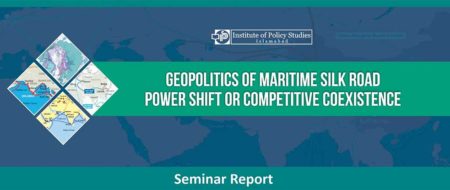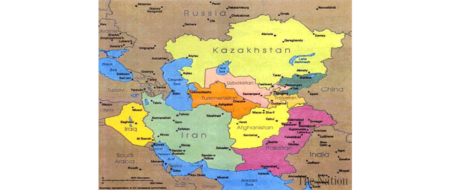Pak-China relations in the 21st Century: Regional situation, security, economic & trade cooperation
Pakistan and China enjoy exemplary friendly ties, which have not only sustained changes of governments and the ups and downs in the regional and global situation, but, in fact, have been expanding and becoming even deeper.
Policy Perspectives, Vlm 1, No.1
Pakistan and China enjoy exemplary friendly ties, which have not only sustained changes of governments and the ups and downs in the regional and global situation, but, in fact, have been expanding and becoming even deeper. It is in the interest of both the countries to keep an eye on the new and emerging regional and global scenario and come up with appropriate strategy to meet the challenges. The selection of “Regional Situation and Security” for discussion and deliberations between the Chinese and Pakistani scholars is both important and timely.
China and Pakistan are situated in an area that has great geographical importance and hosts almost half of the world’s population. Along with the human resources, the area is also rich in natural material resources. This speaks volumes about the importance of stability in the region and of amiable relations between the countries situated here. The fact that three of the seven declared nuclear states of the world are situated here, and another, Russia, has its own interests in the region because of Central Asian states’ being contiguous to the region, further adds to the importance of this region.
Threats to Regional Stability
While there are quite a few problems in the region that are related to security, a historical focus on common borders of China and Pakistan underlines the significance of the Afghan problem, continuing instability in Central Asia, the lingering issue of Kashmir along with the extremist trends and rivalry or competition between two or more states in the region. The first three give rise to the fourth, while state or states with hegemonic designs exploit the situation by maintaining the status quo or even exacerbating the problems.
Afghanistan: The country is in the throes of war and internecine conflicts for more than 25 years. While the country was already witnessing infighting and strife in the ’70s, direct invasion by the now defunct Soviet Union in 1979 aggravated the situation – not only for the country or for its neighbors, but also for the whole world because of the might and scale of invasion. A large-scale resistance movement against the Soviet occupation and international pressure did succeed in expelling the Soviets from Afghanistan in 1989-90, but the war-ravaged country was left abandoned. Faulty withdrawal scheme, delay in the formation of a broad-based consensual government, and international community’s indifference to the plight of Afghans led to widespread anarchy and chaos and those who had waged war against an occupation force, turned against one another in a bid to establish own writ in a country devoid of any modicum of peace and rule of law. Feeling compelled to safeguard their interests, neighboring countries also got involved in the brawl. Even now, when a coalition government exists there with the backing of international alliance since the fall of Taliban regime in December 2001, infighting is continuing – in one form or the other.
Volatile Central Asia: Global powers have always been lured by natural and energy resources in Central Asia, but the balance of power during the Cold War enforced peace in the region. Though there has been no direct confrontation for access to (or control of) these resources after the Soviet disintegration, but the extraordinary interest of local and global powers in the region gave rise to strife that, in turn, plunged the whole region into the throes of instability. This has also been an important factor behind Afghan imbroglio for most of the last decade.
Kashmir Issue: This issue has been a major bone of contention between Pakistan and India since their independence in 1947. The two countries have fought three wars against each other, while the struggle for attaining the right of self-determination, which was being carried out peacefully in the political arena, has been transformed into an armed resistance movement for the last 14 years. Tension between the two countries is unlikely to diminish without an amicable resolution of the conflict.
Terrorism/Extremism: Though terrorism and extremist tendencies are global issues, not restricted to any particular region, but they assume sensitive proportions in this region in view of the prolonging turmoil in Afghanistan. The policies adopted by global powers during the war and infighting for the last 30 years to ensure their interests have produced in the region trained and organized armed groups who are ready to go to any extent to achieve their goals. The underground network of these groups is a threat not only to regional peace but also a menace to world security.
Hegemonic Designs: It is inevitable for peace and security of the region that all countries in it respect each other’s sovereignty and freedom. Viewed in this perspective, along with the above-mentioned conflicts and concerns, it becomes clear that India’s role has always reflected hegemonic designs in the region. Even at present, India is busy in arms buildup. Though its preparations appear to be aimed at Pakistan, the fact is that they are not ‘Pakistan specific’. Moreover, India’s attitude towards all of its neighbors reflects its hegemonic plans. To ensure peace and stability in the region in the presence of hegemonic designs of a big country has been a really big challenge.
Post-9/11 Developments in the Region: Along with this historical situation in the region, the post-9/11 situations and its effects also merit serious attention:
The US Presence: In the wake of the US military action against Afghanistan after accusing it of harboring terror suspects, the region has seen major policy shifts and unprecedented developments. Though the situation is still highly volatile, a radical change has taken place in that US bases and troops are very much present not only in Afghanistan but also in its neighboring countries. Never before, the US forces had come in the region in such large numbers. Moreover, the Bush administration has made it clear that the US forces are to stay in the region for a long period.
Bonn Process: The coalition government in Kabul, established under the Bonn Agreement, is completing its two years in power. Yet, there has been no significant improvement in the stability, and law and order situation in the country. The government that was established under the Bonn Agreement ostensibly consisted of all ethnic groups of Afghanistan, but the fact was that its writ could not be enforced in much of the country, beyond the capital of Kabul, because of less than warranted representation of Pashtuns in it. The International Security Assistance Force (ISAF) too, could not move beyond Kabul. Because of lack of funds, which the international community had pledged for re-building the country, development projects have hit snags.
The real challenge in Afghanistan was about disarming numerous Militias and to form a regular army. But quite opposite is happening there: in actual practice, it is the warlords who are ruling the country, each with his own fiefdom in the country beyond its capital.
The situation is almost identical to the one that prevailed in 1992-95/96, and in many places the same people are running the administration who were ruling before the advent of the Taliban. There are also reports of renewed contacts by the US or Afghan government with some Taliban leaders. This adds to the complexity of the situation.
Opium production and drug trafficking had come to a grinding halt by the year 2000 during the Taliban rule, but it has now once again reached its previous peak positions. Though drug production or trafficking is not directly linked with the security situation, it is not difficult to comprehend that drug business gives boost to international mafia and criminals in an entire region.
In brief, the situation in Afghanistan has not improved and the lot of the common Afghan has not changed in any significant way. Pakistan has been fully participating in the so-called war against terrorism and has arranged for stringent monitoring and surveillance on its borders in spite of public reservations and suspicions as well as historical, cultural and geographical links with Afghanistan. Doing its bid, it is still faced with the danger of spillover of Afghan crisis and instability there.
In this situation of confusion and anarchy, the possible resurrection of Taliban and regrouping of Al-Qaida should not surprise anyone. In the lingering crisis, even the governments and forces in the region that are though included in the Coalition would feel compelled to secure their own respective interests in the region. So, an end to confusion and instability should be considered an important target in any strategy for the region.
Pressure on Iran: The establishment of a Northern Alliance-dominated government in post-Taliban Afghanistan was a development Iran could derive satisfaction from, as it had good relations with the Alliance, yet what intrigues Iran is that this government has come into being in the wake of the US invasion and is a cause of growing US influence. In the face of the US pressure Iran is feeling now, for scores of reasons, it would try its best to avoid diplomatic isolation along with safeguarding its ideological and economic interests. Perhaps this also explains why Iran has assented to international inspection of its nuclear installations. Since American presence in Afghanistan and Iraq poses serious problems for Iran, it would naturally look towards establishing more cordial relations with its neighbors.
India Factor: India is a big country in the region. Its security policy has greatly depended on its relations with Pakistan and, to a significant extent, with China. In the post-9/11 situation, India tried to offer its services to the United States and get Pakistan declared as a target of the US war against terrorism. It, however, could not succeed in its bid. It simultaneously tried to link the on-going freedom movement in its part of Jammu and Kashmir with terrorism. Though it could not succeed in this either, it has somewhat succeeded in increasing diplomatic pressure on Pakistan in this regard. At another front, Indian attempt has been to liken its Kashmir problem with the situation in Xinjiang. This is shrewd but false analogy. It is aimed at playing up Chinese sensitivities, but China is unlikely to fall prey to such tactics. In the meanwhile, the establishment of a government in Afghanistan that is largely composed of pro-India elements goes to benefit India, which, in spite of not being a contiguous neighbor, has tried to increase its influence in the country on a wide-scale. India does not want good relations between Pakistan and Afghanistan; rather it seeks continuation and aggravation of strife between the two over borders demarcation and related issues. It would not view with ease any possibility of enhanced cooperation between China, Central Asian states, Afghanistan and Pakistan.
China and India: Yet another target before India is to emerge as a big power in the region against China. Acquiring a permanent seat in the UN Security Council is also one of its long-term targets. In this backdrop, it is, on the one hand, interested in developing its diplomatic and trade relations with China, and, on the other, it is also busy in strengthening particularly its defense and military ties with the United States. In the latter, it is also getting cooperation from Israel. India and Israel have only recently signed six agreements (September 2003), running into billions of dollars, related to the sale of military equipment and development of modern war technology. Though India’s nuclear and missile program lags far behind that of China’s, but India is gradually closing the gap. Its Agni III missile is capable of targeting many major Chinese cities. Its Sagarica missile program is also on, it can be launched from sub-marine. Then, India is also trying to enjoy an edge in conventional arms, as well. The recent efforts at acquiring AWACS from Israel among others are part of the larger plan. Here, it is pertinent to recall that Israel had earlier failed to get US permission to sell its AWACS to China. India’s amassing of conventional and non-conventional weapons, its increasing cooperation with the United States and Israel are in no way going to help stabilize situation in the region.
Central Asia Cauldron: Central Asian states have direct and natural links with China, Afghanistan, Pakistan, Iran and Russia. Because of Russia’s long-term interests here, its resistance to the US role and influence would be quite natural. But, at least for now, the US is facing no problems from Russia, especially because of Russia’s increased reliance
on America for its own economic well-being. However, Russia would not like to be ‘expelled’ from the area where it has its own influence for the last about 200 years. This is particularly so as these countries still depend on the Russian army for the protection of their borders and oil lines.
Central Asian states have not yet played any significant role in the region or in global politics. They, however, have ethnic, cultural and historical relations with Afghanistan, and cannot ignore developments in this country. On the other hand, they are still passing through a transitional phase since gaining independence after the fall of the Soviet empire. Almost in all the states, rulers are from the Soviet era. Their political, societal, and economic structures are still in the ‘nascent’ phase, while they depend on Russia on many fronts. As long as internal weakness and instability exists there, crimes, drugs, and corruption would not be checked successfully. The instability and weakness in the government structure, on the one hand, and existence of energy and other natural resources in the region, on the other, have attracted attention of the entire world, particularly of the US, towards it.
As for Russia, it is faced with uprisings in Chechnya and Abkahzia etc. It is, therefore, interested in elimination of ‘extremist’ struggles from the region, and taking interest in the so-called war against terrorism. However, if the war against terrorism lingers on in Afghanistan, and the United States tries to get strong foothold in the region, then it would
certainly be very difficult for Russia to put up with it, as it would then feel concerned about its interests in Central Asia.
America sees in China a big obstacle in the way of its interests in the region. China’s borders are common with three Central Asian states, and along with its relations with them, China wants to ensure peace here. India, though not directly linked with Central Asia, has considerable influence in states here owing to its good relations with Russia. Moreover, in its rivalry with Pakistan, it wants to further expand them. Iran has strong historical and cultural bonds as well as geographic links in the region. It also has a claim on the natural resources in the Caspian. Similar is the case with Turkey who has had historical, ethnic and cultural bonds with the Central Asian states and wants to revive its political and trade links in the region. Thus, this region has become an abode of political and economic struggle between so many, and at times, conflicting interests of competing countries. This situation poses a potentially grave threat to security in the region.
The US and China: There is no doubt that in the present circumstances America enjoys an edge over all others in political, economic and technological spheres, and that it wants to maintain its supremacy at all costs. But, while it faces no direct challenge from any single country in the present global political arena, it feels that China stands out among the countries that can challenge its supremacy in the future. Yet, its economic stakes with China are increasing with the passage of time. Clearly, it does not want to be on a collision course with China, but for the success of its designs in the region as well as at the global level, it certainly wants to besiege China so as to increase pressure on it in the event of some extraordinary development. This has been an important factor in the growing US-India relations.
The US, India, Israel nexus: The neocons, who are presently ruling the United States, have introduced a new concept of ‘pre-emptive strike’ against ‘perceived’ enemy or threat. By this they, in fact, want to maintain their domination and obliterate any challenge to it. Obviously, such posturing has imperiled world peace and security. The neocons have embarked upon a policy to establish a new imperial system in the world, which allows use of force for ensuring US control of the existing and known natural (particularly energy) resources and their transportation routes in the world. To accomplish this task, the US has chosen India and Israel as its strategic partners; and the mounting of pressure on Syria, Iran and Saudi Arabia after the occupation of Afghanistan and Iraq is in line with the US plans.
Under the scheme, Israel would play its role in the Middle East and the Gulf, while India would be playing the same role in South and Central Asia. Much of the progress in relations between the US and India has been in this backdrop. Their defense ties have especially increased. One of the signs of these growing relations, which in itself is quite an important development, is that India and Israel, too, are expanding their ties and increasing cooperation in defense and military matters. Though the growing amity between the US, India and Israel should not necessarily be viewed from the religious prism, but it is difficult to ignore that neocons are in power in the US, Hindu fundamentalists are ruling in India, and Jew extremists led by Mr. Ariel Sharon (and belonging to the Likud Party) are calling shots in Israel. This all has something uncanny about it!
Global Scenario: Apart from the region’s own circumstances and prevalent situation, the unfolding global situation after the 9/11 is also very important with respect to the security in the region.
Challenge to International System: Though the US actions have been severely criticized, criticism and protests could not in any significant way alter the US policy or course of action. The public all over the world expressed its opposition to the US invasion of Iraq and big protests were organized, but the US government went its way. It totally ignored the UN, but the international community could do nothing except recording its verbal protest. The reasons that were given to justify military action against Iraq turned out to be false, but there is no credible system in sight where ‘wielders of mass deception’ could be brought to account for their misdemeanors and misleading their own people.
Taking cue from such instances, Israel embarked upon even more brutal use of force against innocent Palestinians, ignoring every sane voice. Far from checking the rise in violence, the UN Security Council appears helpless in the face of the US veto. Thus “might is right” is the rule of the jungle we have made of this world. This situation has generated anxiety, frustration and anger among the people of the affected areas, which, in turn, have given rise to extremist trends and incidents. However, Security Council by not sanctioning US attack and insisting for UN mandated plan has rekindled hopes for survival of the institution. Moreover, the ensuing crisis in Iraq has once again highlighted the inevitability of international institutions like the United Nations.
There is now greater need, more than ever, to have a more effective United Nations working towards its objective of preventing war and ensuring peace. There might be a need for restructuring the UN, but this cannot be helped by bypassing it and ignoring its role, whatever it is. The United Nations Organization had been established to avoid war and maintain peace, and though it has rendered great services in some cases in the past, the impression that has gained roots is that this institution has failed in amicable and durable resolution of conflicts, that there is an in-built flaw in its structure whereby big powers have veto power to use to promote their own interests. While the veto power during the Cold War and its attending balance of power was used by both sides to neutralize each other’s moves, the way the US is abusing the veto and using the UN for its own ends is harmful to the institution. Thus, the whole security system of the world is crumbling.
China’s Comprehensive Development Policy: China is a fast emerging global power. Yet, in sharp contrast with other powers, it has demonstrated no hegemonic designs. With a firm commitment to comprehensive and all-round development, China has registered fast and sustained economic growth. China’s foremost objective is to sustain the growth and the growth rate. It is needless to say that peace and stability in the region is a must for this end. Central Asian states and Afghanistan are China’s neighbors. So, it desires for stability and peace in these areas. It is also interested in accessing the energy resources lying here through pipelines. Then, China, Central Asia, Afghanistan and Pakistan are linked by the traditional trade route. Revitalization of this route in the wake of peace and stability in the region would be extremely beneficial for all these countries.
China is faced with separatist movement in its border areas, particularly in Xinjiang. It justifiably fears that under-ground elements are fanning this separatist movement. In this situation, China has supported the war against terrorism, and wants it to succeed in its declared objectives, though there is evidence of US backing of the separatist sentiment in Xinjiang. Thus, the US presence and influence in the region in particular and in Central Asia in general can create problems for China.
A Futuristic Strategy: In view of the regional situation and the impact of developments at the global level, a proper strategy for security in the region should focus on the following facts.
- There should be no doubt that the region has been in the throes of instability because of mutual conflicts between the states of the region as well as because of the proxy wars of global powers. This region is one of the most backward areas in the world, in terms of development of human resources. It is, therefore, necessary to give attention to economic and social development.
- In the present day world, which has shrunk to a global village, stability is impossible to achieve without preventing and eliminating the danger of aggression from any country. Adoption of a common strategy for meeting the challenge of hegemonic designs, whether at regional or global level, is becoming inevitable. China and Pakistan have exhibited exemplary cooperation in this regard. Maintaining these good relations and keeping the level of cooperation high, efforts should be made to include other countries of the region in any such scheme of mutual cooperation and working together. It is pertinent to note here that relations between Pakistan and Russia have improved during the last few years, while the relationship between China and Russia has become stronger. The need is to come up with a common vision and a scheme for joint actions, taking along the Central Asian states.
- Instability in Afghanistan gives rise to instability in the whole region, besides being an obstacle in the way of full use of resources in the region for economic development. No doubt, this is a formidable challenge and interests of different countries even conflict with each other, at times, the common destiny requires that Afghanistan’s neighbors should increase mutual consultations and contacts and find out some common strategy. It should not be forgotten that instability in Afghanistan is exploited by the outsiders for their own intervention and presence in the region.
- A review of the defense capabilities and technological development of the countries in the region establishes that India’s efforts about acquiring latest, sophisticated military equipment along with developing its own nuclear and missile programs have Pakistan as their first target, and China as the second. However, defense strategies of both the countries and their close relations have prevented it from committing any aggression. It is necessary to keep a check on India’s growing war capabilities.
- Besides the hegemonic designs of India, the prolonged Kashmir issue between India and Pakistan poses a grave threat to regional security. Because of deep public emotions on both sides, the two countries cannot resolve the issue by themselves. All bilateral efforts have invariably failed to produce any tangible results, let alone a lasting solution of the contentious issue. It is, therefore, inevitable for the international community and the neighbors to play their role and try to enforce a judicious solution to it for the sake of peace in the region. Being a major country in the region as well as being a neighbor of both Pakistan and India, China can play a role in diffusing tension between Pakistan and India. It can play a better role than any ‘outside’ power. Obviously, no outside country can be as sincere in, or in as much need of, peace in the region as those situated here.
- Along with the Kashmir issue, the question of Palestine and other problems are symbols of injustices committed in the past, yet they are victims of indifference of the international community and institutions. Continued insensitivity of the international community has turned political movements in these areas into armed struggles, which, in return, has led to an unending chain of violence and counterviolence. Doubts and suspicions over the US-led war against terrorism carry weight: that it is more about serving self-interests rather than elimination of terrorism, that this war has in fact increased the dangers to world peace. Lest these suspicions come true and the situation get further aggravated, the need is to make international institutions stronger and more effective. Along with recognizing movements for right of self-determination and distinguish between freedom struggle and terrorism, these institutions should be able to resist the US unilateralism and the US approach of bypassing international law and norms. Otherwise, wide-spread anger and frustration would feed those who can go to any extent of use of force for achieving their ends.
- While terrorism is being condemned everywhere, proper attention has not been paid to its causes. Terrorist activities in which a human beings sacrifice their lives indicate to the height of frustration. This frustration is there among the Muslim masses because their genuine freedom struggles are being suppressed by repressive regimes, on the one hand, while, on the other, their leaderships do not represent their sentiments, nor do international institutions and powers exhibit any judicious approach or inclination in solving their problems.
Pak-China Institutional Collaboration: Continued strategic dialogue between China and Pakistan on security and defense issues at both governmental and institutional levels would greatly contribute to maintaining peace in the region. For this purpose, panel of experts should be formed. An enhanced level of interaction between the two countries, which have historically enjoyed exemplary relations, would also promote the idea of joint strategy for regional peace. Similarly, joint military exercises on regular basis and collaboration in R&D along with the continued sharing military know-how and technology would enable the two to face emerging challenges and ward off threats together and thus ensure peace in the region.
Economic and Trade Cooperation
The trend of closer regional ties, particularly closer cooperation in economic and trade fields, is fast emerging in the changing international situation. The nations living in different parts of the world are enhancing their relation with their neighbors in a way in which they not only learn from one another’s experiences but where benefits of economic development can also be transferred and result in overall regional development. European Union is a significant example in this regard. Similarly, the increasing cooperation between South East Asian countries from the forum of (ASEAN) is bringing stability and prosperity in that region.
Need for Regional Cooperation: Despite their deep and strong bilateral relations, Pakistan and China, however, do not join at any regional forum. Moreover, the forums that exist for regional cooperation are not effective for certain reasons. Pakistan-India tension continuing for years has made SAARC ineffective. Similarly, fighting and continued instability in Afghanistan for over two decades is an obstacle in the way of an effective role of ECO, in spite of its expansion. Due to lack of cooperation at the regional level, the people of all the countries of the region as a whole are facing deprivation and poverty. According to estimates, over 650 million people in the region are living below the poverty line. Though China has been successful in bringing poverty to 10 per cent, the situation is highly alarming in neighboring countries like Kyrgystan, Tajikistan, and Azerbaijan where it is 55, 60 and 49 per cent, respectively. In Pakistan and India, more than one-third are living below the poverty line. All these countries are considered poor by per capita income yardstick as well. Moreover, the people of this region are living a difficult life with respect to the availability of social services. While there is a host of internal reasons within each country, one of the main and common reason for this dismal economic situation is that the economies of these countries are caught in the debt trap. Every year a big part of national resources goes into servicing of debt and interest. Adding to this, these countries always feel unable to resist unreasonable conditionalities of creditors and international institutions, which results in further increasing the deprivation of their people. This situation can be considerably improved by coming together of the countries of the region in evolving common strategies and ensuring enhanced economic cooperation. Vast opportunities exist for cooperation between Pakistan, China and other neighboring countries at the regional level
Resources and Potential: The region is rich in natural resources. This can be estimated from the following facts:
- Central Asia is rich in oil and natural gas reserves. According to estimates, 200 billion barrels of crude oil, i.e. one fourth of the world’s total, are present in countries lying on the coasts of Caspian Sea. Similarly, natural gas is also present in vast quantities in these countries. There are also huge oil and gas reserves in nearby Iran.
- Countries of the region are also rich in minerals like gold, copper and costly gemstones. Some 171 minerals have so far been discovered only in China, which account for about 12 per cent of the world’s total.
- All the countries of this region have fertile agricultural land. Moreover, Pakistan and India have one of the best irrigation systems. The region is capable of not only attaining self-sufficiency in edible products but can also earn foreign exchange by exporting them.
Not only the abundance of these natural resources provides a comprehensive opportunity for closer economic and trade cooperation between the countries of the region but the deprivation of their people increases the need for concerted cooperation at regional level. The present situation of economic cooperation between the countries of the region is not encouraging. In particular, the volume of trade between Pakistan and China, the two countries that are regarded as strong allies and friend at the international level on strategic and foreign policy matters, is nominal. According to the latest statistics, Pak-China trade has only recently reached $1.8 billion annually, whereas China’s international trade has exceeded $620 billion.
The Globalization aspect: The failure of the recently held fifth ministerial conference of the World Trade Organization (WTO) in the Mexican city of Cancun has put the future of multilateral trade at risk. The apprehension is that the nations that dominate world trade, like the United States and the European Union, may revert back from multilateralism to
bilateralism and then, to regionalism in a bid to secure their own interests. The changing situation demands from China, Pakistan, Central Asian states, and other neighboring countries to take measures for promotion of economic and trade cooperation so that their dependence on the outer world is decreased and the deprived people could benefit from prosperity.
Recommendations: The following suggestions are made in this regard:
- In recent years, China has made enviable progress in economic and financial areas and, therefore, enjoys great importance in world economy. While the Chinese products and technology have flooded the world markets, other countries of the region are still dependent on Western countries in the fields of technology. By transferring technology to these countries, China can not only earn foreign exchange but can give a boost to economic development in these countries, which in turn goes to benefit the entire region.
- Many Chinese companies are investing throughout the world. Chinese investors should invest in their neighboring countries where low level of economic development also owes to very small foreign direct investment (FDI). These countries, too, should try to make their laws more attractive for Chinese investment.
- It is necessary for the promotion of regional cooperation in trade that all the countries give importance to marketing each other’s products, so as to introduce them. Exhibitions and fairs should be organized at regional level for this purpose, and participation of traders and industrialists should be ensured.
- There is a dire need to improve the existing land and air travel facilities between China, Pakistan, Central Asia and other countries of the region. The need is to fully use the historical Silk Route (Karakorum Highway), which remains closed for almost half of the year. All available means and resources should be exploited to devise a plan to keep this route open for the maximum period of the year.
- Without the provision of banking facilities, it is impossible to think about expansion in economic and trade cooperation in today’s world. But, banking links are very few between the countries of the region. In addition to opening the branches of national banks, China, Pakistan and other countries should also study the establishment of a common bank or financial institution.
- The implementation from October 2003 of an agreement on transit traffic between China, Pakistan, Kyrghyzstan, and Kazakhstan is a good omen. It is, however, pertinent to note that this agreement had been signed in 1995, but could not be implemented for eight years for petty matters like route-permit and transit fees, etc. Such slow pace impedes regional cooperation and must be curbed in future. Now, the need is to make this agreement really effective, besides considering its expansion for the benefit of other landlocked countries like Afghanistan, Tajikistan and Turkmenistan.
- To exploit the energy resources in the Central Asia, particularly in Kazakhstan and Turkmenistan, developed countries are not only strengthening the network of their multinational companies for exploration of these resources. They are also trying to make such routes for easy access to these resources which could serve their long-term goals as well. China’s stewardship in this regard is the need of the hour. Chinese investors have an opportunity here to flow their money in this direction. Though Western countries have an edge in the oil exploration technology, yet joint ventures and investment with Western countries can be entered into to share in the benefits and use of these resources for the betterment of the people of the region. Afterwards, fast developing Gawadar Port (which provides nearest port to these countries) can be utilized. The need is to coordinate all efforts in this regard.
- The construction of gas line from Turkmenistan to Pakistan through Afghanistan is in limbo because of the instability in Afghanistan. This gas line can also go further into India. This underscores the need of peace and stability in Afghanistan for better use of vast energy reserves of Central Asia, besides the development of Afghanistan itself.
- China’s northern province of Xinjiag has common borders with eight countries, providing vast opportunities to China for extensive trade with these countries. Since 1967, there existed a trade agreement between China and Pakistan, but it ended in 2000. It aimed at enabling the people of Xinjang and Pakistan’s Northern Areas to meet their needs from areas across the borders without being dependent on the far-off economic hubs of their respective countries. The need is to not only revive this agreement but also expand the area of its jurisdiction and inclusion of more trade items in it. Other countries, too, should move in this direction through either bilateral agreements or regional arrangements.
- Afghanistan is in the throes of anarchy and destruction for the last about 30 years. An amount of $15 billion has been announced for its reconstruction and development. This process is slow as well as dominated by Western companies. There is an opportunity here to promote regional cooperation, for which China, Pakistan, and Iran should especially come forward to devise a common strategy.
- The decisions of international financial institutions (IFIs) and World Trade Organization (WTO) do not much keep in view the interests of the developing countries. Countries in the region should evolve common strategies at these forums to protect their own interests.
- Pakistan provides nearest approach to the Arabian Sea to the states of Central Asia, while Afghanistan is already benefiting from Pakistani harbor. Pakistan, along with Iran, provides way to Central Asian countries for their world trade.
Conclusion
China and Pakistan have signed eight agreements during President Pervez Musharraf’s recent visit to China. The most important is about preferential trade between the two countries: China would give concession in tariff on 839 items to Pakistan while Pakistan would extend its concession to 200 Chinese items. This agreement would not only strengthen economic ties, but would also help in establishing a better trade balance between China and Pakistan. Other countries of the region should also move forward for preferential trade between them. There is a growing realization among the Asian countries of the importance of joint efforts and common strategies for collective benefit. It is a good sign. The second annual Boao Asia Forum Conference, held in China’s southern province of Hunnan, also holds great promise in this regard. Pakistan’s President in his address stressed on the need of chalking out comprehensive plan for Asia’s development. He also enumerated obstacles in the realization of this vision. The situation of security and law and order tops these obstacles. Similarly, referring to China’s economic achievements as an example to emulate and a guarantee for stability in Asia, he also highlighted the importance of enhanced cooperation between China and the countries of the region, particular in transfer of technology. Chinese Premier Wun Jiabao asked for higher level of cooperation between Asian countries for economic development. The participating heads of states and governments of the conference concurred with these observations as they all realize the importance of greater cooperation. The need is to not only maintain the momentum but boost it up further so that the goal of real and comprehensive development in the region is realized.
At the intellectual level, Chinese Association for International Understanding (CAFIU) and Institute of Policy Studies can greatly facilitate such an enhanced level of interaction between the two countries by organizing seminars, workshops and other forms of interaction between the scholars, researchers and policy-analysts of both sides. To begin with, it is proposed that the two institutions shall prepare a review of the security situation every six months. It could be a joint study, but if two studies are conducted separately, they could be exchanged for better mutual understanding. Similarly, the two institutions shall organize conferences, say, one in two years, alternately in China and Pakistan.


